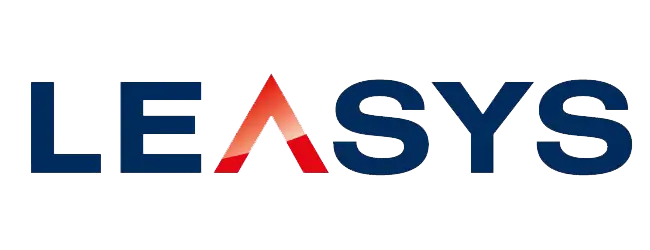Electric Vehicle Salary Sacrifice

Salary Sacrifice Scheme
Highlights:
- Typical corporate fleet size 50 – 1000
- Only available for battery electric vehicles
- Employee eligibility – minimum age 21 and in continuous employment for at least 12 months
- Complete maintenance and breakdown, including breakdown, maintenance, servicing, and tyres
- Insurance cover arranged through an insurance company or provided by the employer
Broker responsibilities:
- Scope and design of the salary sacrifice scheme
- Interactive digital quote tool
- In-life management
Salary Sacrifice Scheme Details
- Salary sacrifice is a way for an employee to legally give up (sacrifice) a portion of their salary in return for something else, in this case, a car.
- The employer and employee agree to amend the employment contract terms reducing the employee’s entitlement to cash remuneration.
- The cash entitlement sacrifice is made in return for a form of the BEV
(battery electric vehicle). - Both employer and employee can benefit from salary sacrifice. For example, when a portion of the employee’s salary that is subject to NIC (National Insurance Contributions) and income tax is swapped for a benefit that is NIC and income tax-free or partially exempt non-cash benefit.
- The employee’s net salary must not be reduced below the National Minimum Living Wage rate by the salary sacrifice agreement.
- Salary sacrifice schemes allow businesses to offer the additional benefit of a BEV to all permanent employees who meet the eligibility criteria.
- Employees receive a fully electric vehicle in return for a fixed monthly deduction from their gross salary, giving them NIC and income tax savings.
- Limiting the scheme to fully electric vehicles maximises savings by reducing Benefit in Kind tax costs and simplifies scheme administration.
- The scheme supports sustainability and helps employees do their part to achieve net-zero emissions
Salary Sacrifice works Costs
- Car’s gross cost. Monthly gross lease from the quotation portal, including maintenance, servicing, and tyres
Minus
- NIC and income tax savings. Reduction in NIC and tax payments. Monthly gross lease x NIC and marginal income tax rate
Plus
- Benefit in Kind tax. Collected in tax code. BIK rates for EVs are 1% 2021/2022, 2% 2022/2023 and through 2024-2025
Equals
- The net cost of your car
Salary Sacrifice Benefits
Benefits for employees:
- A cost-effective way to drive a brand new fully electric car. There are many vehicles to choose from, all with the latest technology and equipment.
- Hassle-free – package includes breakdown cover, insurance, maintenance, road tax, servicing, and tyres.
- Significant savings – benefit from NIC and income tax savings
- Simple process – create as many quotes as needed to choose the right car. No online credit checks and low upfront costs.
- Low-cost driving – fully charging an electric vehicle is significantly cheaper than purchasing a full tank of diesel or petrol. EVs are permitted in Ultra Low Emissions Zones and are exempt from congestion charging.
Benefits for employers:
- Enhanced reward packages and improved employee engagement. Attract, retain, and reward valued employees.
- The BEV only approach simplifies the operation and administration of the scheme making it easier to communicate compelling offers.
- Supports sustainability – fully electric vehicles are much better for the environment, reducing business travel emissions.
- Easy implementation and minimal costs
- Tax-efficient – employers receive NIC savings from the sacrificed salary
Salary Sacrifice Sustainability
The salary sacrifice scheme only relates to fully electric vehicles. Therefore, it is vital that employees/customers carefully consider their options and ensure the vehicle type is suitable for their business and individual needs.
Manufacturers’ figures may differ from real-world driving. Your actual range will depend on several factors, including the number of passengers, load weight, outside temperature, equipment usage, and driving style. The graphic above is just a guide, and you should make an informed decision based on your research and personal circumstances.
| Issue | Solution |
| What is the aim of the scheme? | • To drive sustainability • Offer enhanced employee benefits • Both |
| Scheme interest | • Conduct a survey to establish employer/employee interest • Consider how many EVs are needed per annum |
| Employee eligibility | • Aged 25 and over • Minimum service length • Not currently in receipt of cash allowance or company car • Those who are currently in receipt of cash allowance or company car |
| Scheme design | • Fleet policy – determine the number of essential drivers, opt-out drivers, company car drivers, and non-eligible drivers who may use the vehicle for occasional company use |
| Car options | • Available battery electric vehicles only |
| No of vehicles | • Estimate volume of vehicle uptake |
| Lease period | • 24-36 months |
| Vehicle sustainability | • Check if an EV is suitable for the employee |
| Salary deduction | • Use current payroll facilities to deduct salary sacrifice payments • Account for any other existing salary sacrifice schemes, such as cycle to work |
| Insurance | • Outsourced or employer insurance • How will the deductions work? |
| Documentation | • Designed for employee and employer |
| Quotation | • How are they completed? • Employee facing quote website/tool? • Requirement to check access/eligibility for the scheme |
| Charging | • Home charging costs/requirements? • How will this work? |
Stakeholder Responsibilities
The broker is responsible for:
- Facilitating the insurer and quote provider
- Providing policy documentation and scheme design after consultancy
- Providing employee support and guidance on salary sacrifice
- Undertaking driver’s license checks
- Co-ordinating charging points
- Supporting customers through the quotation and order process
- Managing contractual amendments and lifestyle events
- Checking minimum salary thresholds
The insurer is responsible for:
- Providing insurance quotations for a fixed contract period
- Collecting insurance premiums
- Reviewing policy in the event of a claim
The quote provider is responsible for:
- Calculating driver rentals and appropriate salary deductions
- Providing a breakdown of the quote, including NI, tax, and BIK
- Amending the employee contract
- Overseeing the App/website
Express Vehicle Contracts is responsible for:
- Providing non-regulated CH product and permission to use it for salary sacrifice
- Supporting the customer with any contractual amendments
- Concessions around settlement figure/provision pot
- Training support and product material for brokers
- EV rate books price guide
The employer is responsible for:
- Agreeing the eligibility criteria and scheme design
- Facilitating deductions through payroll
- Arranging insurance
- Agreeing provisions for lifestyle events
- Distributing product material to eligible employees
- Checking minimum salary thresholds
The employee is responsible for:
- Requesting quotations through quote provider/broker
- Signing the addendum confirming the order
- Advising employer of any changes in lifestyle events/mileage
- Any insurance claims









